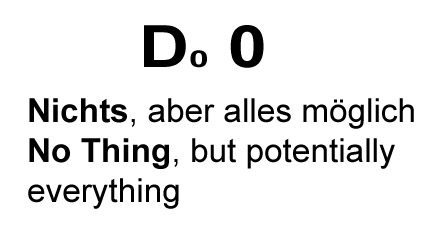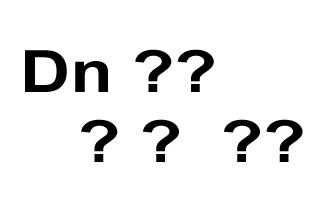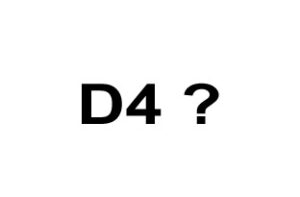Dimension n Addressarray
The 4th, the 5th and any other to nth or further Dimension do not exist for us, because we still have to invent them.
Just as we invented the 1st, the 2nd and the 3rd dimension. Before we could usefully employ D1, D2, and D3 we had to postulate an address-array, develop it, make it available and concurrently develop a language to use it:
D1 – Next to another, String
D2 – One above the other, Plane,
D3 – One be3hind the other, Cube,
D4 – ? to be dveloped, WiP.
To be able to usefully employ these we concurrently developed protocols (mathematically an algorithm, more commonly a formula) that allow us a much faster navigation through this address array from one info-container position like 1 to another info-container position like 1 trillion.
If you can follow me, realizing that axes and 90 degree angles are a construct and not physically present, but rather an address array that can be accessed by a formula that restriction of finding a 4th dimension that is perpendicular to the three 3D planes falls away.
Visually:


has no address array.

![]()
has the address array name length.


expands the address array by width.


adds to D2A the concept of depth.
And


is still open.
We do have some in use . We just have not recognized them as such – as an address-array and its formula set for addressing info-container postions in that array.
We can create and commonalize (accepted practice) a D4 address array.


then will follow from the above.
Thus: To get from D0 to D1 we place the containers for information “next” to each other, from D1 to D2 we place them “on top” of another and from D2 to D3 we place them one “behind the other” .
But without cognisance of the concept of there possibly being something else, something more – how can D2 conceive of D3 without prior perusal that there could be something like behind – we could not go the next step and develop an address array D4 and its concommitant formulae set.
Neither our language nor our mathematics make available such a postulated address array for D4, D5 and others.
It is because of this that we cannot perceive and consequently not use D4 and others.
If we lose the perception that of dimension being perpendicular to another, but rather look at it as an addressing algortihm we can discover and develop the appropriate language for navigation.
Two examples of 4D navigation, just not named as such, in place and use:
A library has a D4A navigation in place with its Dewey-Decimal System:
The 3D library complex with its folded array of books, where each one book and page (2D) is a folded string of letters (1D) where the Dewey-Decimal system makes available a 4D address arrray to quickly find a data packet by the name of book.
An atlas that uses a co-ordinate system. The co-ordinate system is an “overlay” address array that allows for quicker navigation from one position to another. Instead of advancing sequentially from one ink-blot to the next, starting at the beginning of the atlas, or paging through each page individually you access the coordinate system which gives you page and coordinates to get to point x in a jiffy.
With this exposé I would liek to stimulate the development of a D4, D5… These dimensions will be for our progeny that what we make out of it.
For D3 we have coined the word space. D4 or D5 … Dn is Time? I do not think so. What we call time is a sequencing algorithm, a realisation protocol that we employ to read data, i.e. access info-containers in a specific order. It is an Ordering-Protocol like mathematics +1=.
In my view it is thus not a dimension, not an address array. It is akin to the formula used to retrieve information from that address array.
Have you ever counted to one million, physically, like 1+1+1+1+1…..?
Up to a trillion? Probably not.
To easily get from 1, e.g., call it (address) A, to one trillion, call it (address) B, literally and physically, we make use of a little trick:
1. We fold what is basically a string (here of numbers) into a plane (2D Array) or even a cube (3D Array), and
2. use an algorithm for navigation in this array. This algorithm we call a formula in mathematics:
1D: 1+1+1+1… =
2D: 1 000 000 x 1 000 1000 =
3D: 100 000 x 100 000 x 100 000 =
and so on.
This folding is itself an algorithm for arranging data that will allow us to use a certain formula set to more easily “jump” from one position (Array Address) to another position (Array address) than to have to sequentially “jump” from one position to the next by +1.
It is just that we have forgotten and now do it automatically, “seeing” our world as 3D. Do not be fooled by the “perception” of axes at 90 degrees to each other, it is trying to iterate this construct (OP) of axes at 90 degrees to each other that hinders us in progressing easily into xD.
Do you consciously think about the 3D-rendered image on your screen as a string of 1’s and 0’s?
Did you ever physically walk from Rome to Hamburg? Step by step? From (address) Rome to (address) Hamburg?
We are lucky, we have developed a little trick, an algorithm called car to bring us more quickly from one address to the other.
Like above where we can move from (address) 1 to (address 1 000 000 000 000) more quickly.
We are even more lucky because we have a few more tricks available for this: a train, a horse drawn carriage, an aeroplane, a bicycle.
All the while it is becoming fashionable to rather walk again, because that raw experience is missing, but that is a story for another place and time.
In the beginning, our earth was just a point that we expanded and then had to develop tricks to move around on it faster: Walk from point A to point B, map it, set up a co-ordinate system anmd then navigate with the help of that. Could you fly from New-York to London without that co-ordinate system?
Travelling to Mars – well, here we are still serial bingers. We take an info-container, a spoace ship, and then we advance it by +1=, step by step – so that then takes three years to advance our info-container from address array earth to addresss array Mars.
The excitement future travel will be this: developing new formula sets.
And here is one starting point for that:
Even our mathematics will evolve. Its Ordering-Protocol of +1=, as useful as it is, goes only so far. That is why I prose a developmental math, en eMath, where +1 -> develops into..
What do we teach our children? We start with 1+1+1+… then we progress into 3×1 and on.
We do not 1+1+1 to the bitter end.
We should develop beyond 1+1+1+1+1+1+ in life and in maths.

